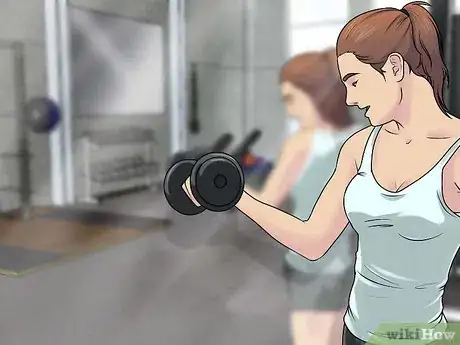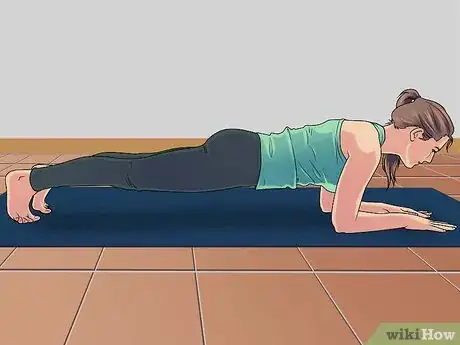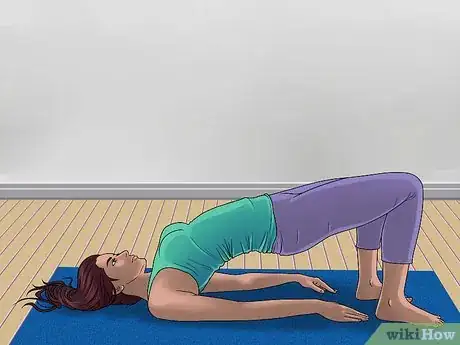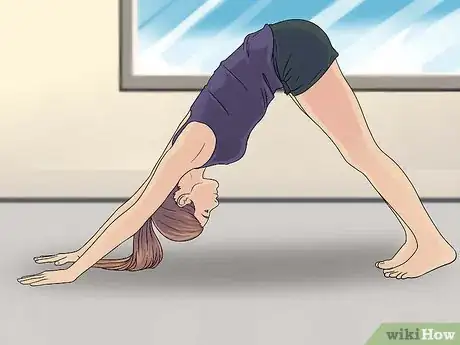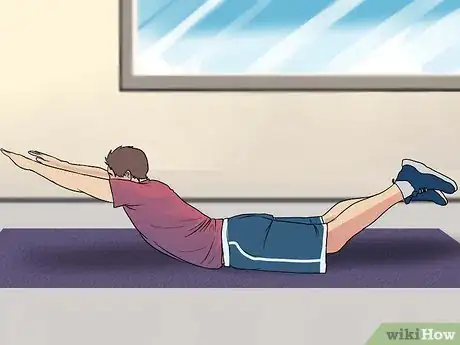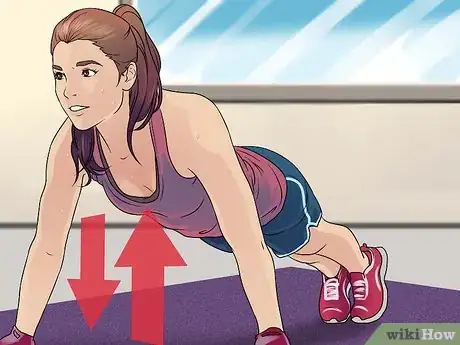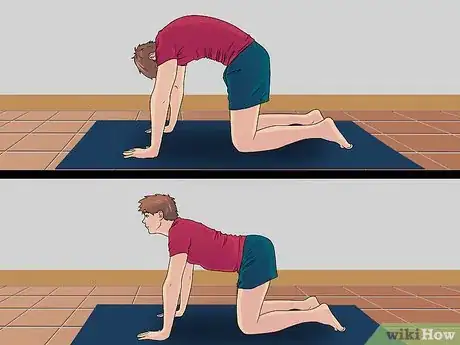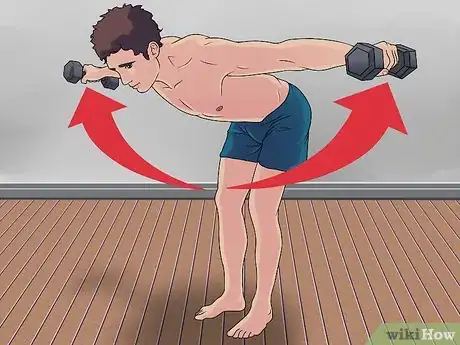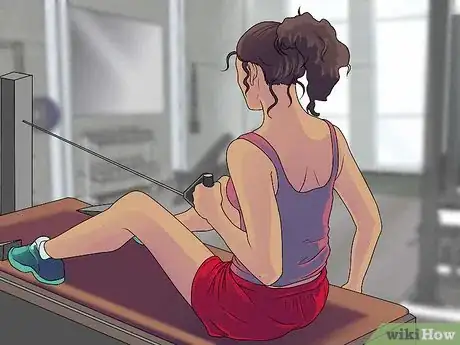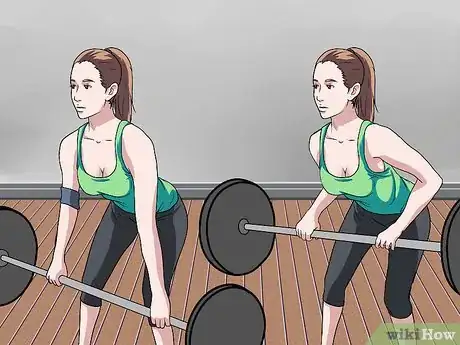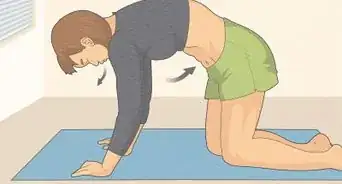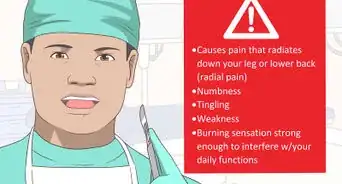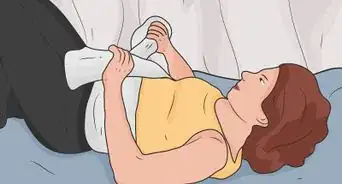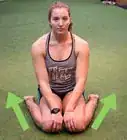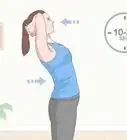This article was co-authored by Francisco Gomez. Francisco Gomez is the Head Coach at the FIT Potato Gym, a training gym established in 2001 in the San Francisco Bay Area. Francisco is a former competitive runner who helps endurance athletes train for major marathons like the Boston Marathon. Francisco specializes in Injury Rehab, Flexibility, Marathon Training, and Senior Fitness. He has a B.S. in Nutrition and Exercise Physiology & Running.
There are 11 references cited in this article, which can be found at the bottom of the page.
wikiHow marks an article as reader-approved once it receives enough positive feedback. In this case, 82% of readers who voted found the article helpful, earning it our reader-approved status.
This article has been viewed 312,103 times.
You use your back muscles in almost everything you do, whether you're more active or sedentary. It is important to exercise both your upper back and lower back regions to help you stay strong and injury-free.
Steps
Preparing for Exercise
-
1Talk to your doctor. Always talk to your doctor prior to making any changes to a workout or starting a new workout. This is especially important if you're recovering from an injury or have had a history of a back injury.
- Always get clearance from your doctor before starting to work your back. Ask her when you can start exercise, what type of exercise, what resistance weight and if there are any other restrictions.
- Also ask her what types of pain are to be expected. Some generalized muscle soreness is typical and usually doesn't signify you've injured your back. However, more acute pain or pain similar to a past injury should signify you need to stop exercising and call your doctor immediately.
-
2Follow correct form. Poor form during exercise is one of the most common reasons for injuries.[1] Since back injuries can be severe and debilitating, it's very important to ensure you always use correct form.
- Consider talking with a personal trainer, exercise specialist or a staff member from your local gym. They'll be able to tell you how to do exercises, use the machines and have correct form throughout your exercise workout.
- Try doing some of your exercises in front of a mirror. Watch yourself as you perform the move. Make sure you're using correct form and make any changes to your form as necessary.
Advertisement -
3Do more than back strengthening exercises.[2] Whether you're recovering from an injury or are just trying to prevent one, it's recommended by fitness professionals to tone and strengthen more muscles groups besides your back.[3]
- More than one muscle group assists or aids your back muscles in a variety of activities. Since your back muscles are smaller compared to others (like legs), it's the union of two muscle groups that helps make you stronger.
- Focus on also strengthening your core, pelvis and hips. Many movements require the use of all of these muscles groups.[4]
- Also work your legs. Whenever you're lifting (either at the gym or at work), you need to use mostly your legs with the addition of some back muscles to effectively and safely lift objects.[5]
-
4Stretch before you start with any exercises.[6] Stretching is an important way to maintain your health and fitness, especially if you haven't exercised in awhile.[7]
- It's important to stretch warm muscles. Do a light warm up and then do your pre-workout stretch. Also stretch your entire body, not just your back.[8]
- Do a 90/90 neutral back stretch. This will help open up the muscles in your back, readying them for your workout. The stretch will also help your chest muscles open up and reduce tension in muscles and ligaments overall.
- You might also like to consider a thoracic stretch. Place the back of a chair facing you to serve as a stable support. Stand behind this, placing your feet shoulder-width apart and bend your knees slightly. Push back through your backside; you should feel a stretch along your upper back. Hold for a count of 10, then move back up gently.
- Another thoracic stretch: Sit on a chair and place your feet flat on the ground. Roll your upper body slowly forward from the waist. Place your hands beneath your legs and grip the chair legs. Then curl back up slowly.
Incorporating Bodyweight Exercises
-
1Incorporate the plank pose. The plank exercise is an all-in-one movement that works a variety of muscle groups. Including your back, the plank also works your shoulders, legs and abs.[9] This is a great combination pose for your body.
- To start, lie face down on the floor. Push yourself up into a typical push-up position however rest your body on your forearms instead of your hands. Make sure elbows are bent and aligned with your shoulders.
- Engage your core by rotating your pelvis forwards towards your head. Keep your body in a straight, rigid line for as long as you can hold the position.
- Release pose and repeat as necessary.
-
2Do the bridge pose. The bridge exercise functions as a back bend, a core strengthener and a balance pose.[10] You should do this exercise on a yoga mat or other springy surface, since you'll be supporting all your weight on your hands and feet in order to stretch out your back.
- Lie flat on your back on the ground. Bend your knees at a 90 degree angle while keeping your feet flat on the ground. Lay your arms by your sides.
- Push your body upwards through your pelvis towards the ceiling. Your body should be in straight line slanting downwards from your knees towards your head.
- Press to hold this position with your buttocks and back. Hold for a few seconds, lower back down almost to the starting position and then push back up to the top.
- Repeat as many times as necessary.
-
3Try the downward facing dog pose in yoga. This yoga pose is a great exercise to help strengthen and stretch your entire back.
- Start this position on your hands and knees with your fingers pointing away from you.
- Tuck in your toes and lift your knees off of the floor. Push up through your pelvis and point your buttocks towards the ceiling. Your body should look like an upside down V.
- Straighten your legs however leave a slight bend in them.
- Push your pelvis up and away from the floor and push firmly with your heels and hands.
- Keep your core, arms and legs firm to hold your body in place. Let your head dangle in between your arms in front of you.
- Hold this position as long as you can and repeat as necessary.
- The downward facing dog is a fairly straightforward stretch, so if you want to challenge yourself you should take a look at the whole sun salutations series. This pose is a good resting position stretch at any time during the workout.
-
4Do the superman or swan dive pose. This is an easy-to-do strengthening move that can help tone the entire back side of your body including your back.[11]
- Lie face down on an exercise mat. Stretch your arms forward so they are laying straight out in front of you.
- Lift your legs, with toes pointed away from your body, up straight in the air. At the same time, lift your shoulders, head and arm off of the floor as well. Your body should look like you're flying or in a slight U shape.
- Hold this position as long as you can and then relax and repeat as necessary.
-
5Do push ups. In order for this exercise to activate your back muscles, focus on keeping it as straight as possible. This also assists in building arm and chest strength.
- Lie on the floor face down. Lift your body up into a straight line balancing on your toes and hands. Make sure your hands are shoulder width apart and wrists are under shoulders.
- Lower your body down (keep your body straight) by bending your elbows out away from your body.
- Slowly lower your body until your chest is about an inch or two away from the ground. Push yourself back up to the starting position and repeat as necessary.
-
6Do a cat and dog exercise. This low-intensity exercise improves flexion and extension of the spine. Try to do the movements of this exercise as smoothly as you can in order to maximize its effectiveness.
- Get down on the floor on your hands and knees. Use an exercise mat to make this exercise more comfortable on your hands and knees.
- Flex your back so that it's curved up towards the ceiling. Press through your lower back upwards. Drop your head down towards the floor. Hold for a few seconds.
- Slowly release the position and push your lower back down towards the floor so your back is concave. Extend your face upwards towards the ceiling. Hold this position for a few seconds.
- Repeat this sequence as many times as necessary.
Incorporating Equipment-Based Exercises
-
1Incorporate bent over reverse flys. Reverse flys help strengthen your shoulders and upper back. This exercise can also help you maintain proper posture.[12]
- Stand up straight with feet shoulder width apart. Bend your knees ever so slightly. Make sure to keep the spine neutral and core engaged —don't let the back arch.
- Hold a small dumbbell in each hand. Lift arms out to your sides so they are parallel to the ground. While engaging your core bend your torso over in front of you until your body is close to a 90 degree angle.
- Lower the weights and your arms down until they are straight in front of your face with arms straight. Lift arms back up until they are parallel to the floor. Repeat as necessary.
-
2Try seated cable rows. Doing single-handed cable rows can help strengthen your back and specifically target each side of your body at a time. This can also help correct any strength imbalances.[13]
- Set up a cable machine so that the handle is at chest-height. Sit down in front of the machine with your legs straight out in front of you and stabilized by the machine.
- Grab the cable handle and pull your arm back towards your body. Pull until your upper arm is flush with the side of your body and your arm is bent at a 90 degree angle.
- Pull with your shoulder and back muscles, not your arm. Do not twist your body during the exercise. Repeat this exercise multiple times with each arm.
-
3Incorporate a bent over row. This exercise uses a barbell to create resistance in your back muscles.[14]
- Hold a barbell with both hands about shoulder width apart. Make sure your palms are facing down.
- Bending your knees slightly, bend over at the waist until you're close to a 90 degree angle at the waist. Ensure that you keep your back straight.
- Pull the barbell in towards your body around belly button level. Hold the barbell here for a second or two and then lower back down to the starting position. Repeat as many times as necessary.
References
- ↑ http://www.mayoclinic.org/healthy-lifestyle/fitness/in-depth/weight-training/art-20045842?pg=1
- ↑ Francisco Gomez. Fitness Coach. Expert Interview. 24 October 2019.
- ↑ http://www.bodybuilding.com/fun/mielke12.htm
- ↑ http://www.bodybuilding.com/fun/mielke12.htm
- ↑ http://breakingmuscle.com/mobility-recovery/why-you-lift-with-your-legs-not-your-back
- ↑ Francisco Gomez. Fitness Coach. Expert Interview. 24 October 2019.
- ↑ http://www.mayoclinic.org/healthy-lifestyle/fitness/in-depth/stretching/art-20047931?pg=1
- ↑ http://www.mayoclinic.org/healthy-lifestyle/fitness/in-depth/stretching/art-20047931?pg=1
- ↑ http://news.health.com/2014/02/28/4-things-you-need-to-know-about-planks/
- ↑ http://www.cnyhealingarts.com/2011/01/21/the-health-benefits-of-setu-bandhasana-bridge-pose/
- ↑ http://www.everydayhealth.com/columns/everyday-fitness/superman-pose/
- ↑ http://www.bodybuilding.com/exercises/detail/view/name/reverse-flyes
- ↑ http://www.muscleandfitness.com/workouts/back-exercises/8-best-cable-exercises-big-back-0/slide/3
- ↑ http://www.bodybuilding.com/fun/jon14.htm
About This Article
If you’ve already stretched and learned the proper exercise form, the best way to exercise your back is with bodyweight exercises. Hold different poses, such as the plank and the bridge. Do push ups to activate your back muscles and improve spinal flexion with the cat and dog exercise. Then, start incorporating equipment-based exercises, such as bent over reverse flys and seated cable rows, into your workouts. For instruction from our Fitness reviewer on how to do different poses and exercises, keep reading!

